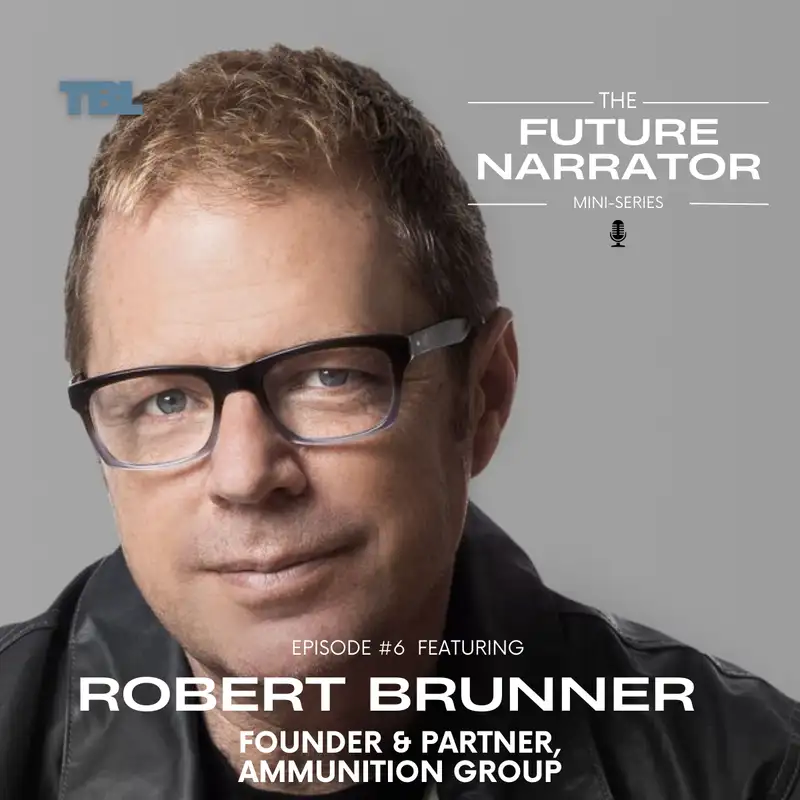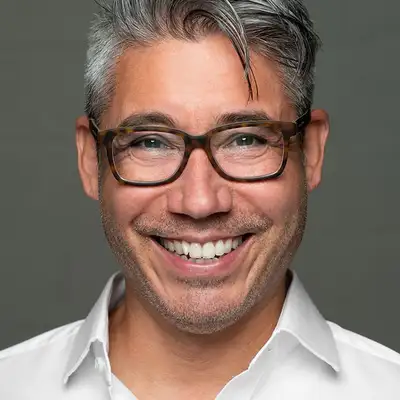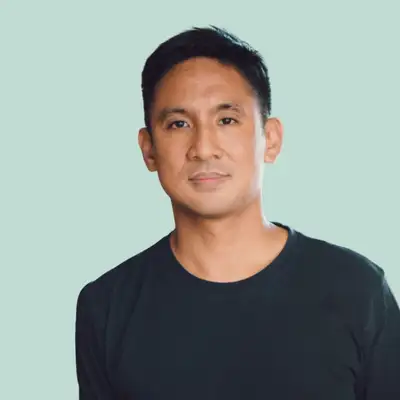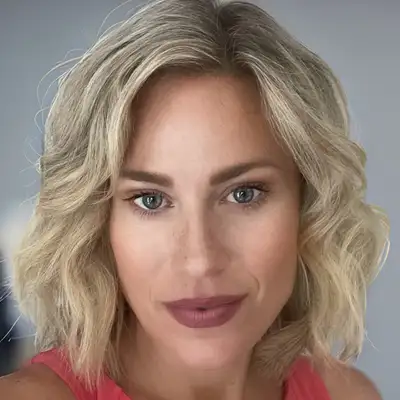Embracing Risk and Innovation in Design and Technology with Robert Brunner
Salli: [00:00:00] You're listening to the business leadership podcast with Edwin Frondoso.
Robert: What we're about are creating things that matter. Making sure all this resource and money and time that go into developing and delivering a product is not wasted.
Risk is part of innovation.supporting people to take risks and allowing people to fail, I think is really important. And there's so much at stake and things move so fast that this idea that I'm going to experiment and do some things and it might fail becomes really scary to people. So I think we're, this is something that we're commonly pushing on and just, and with our clients and say, look, this is scary. You're taking a risk. It might fail, but if it doesn't fail, it'd be amazing. If it does fail, we'll learn a lot. So let's keep pushing on that.
Edwin: Good morning. Good afternoon. And good evening biz leader. Welcome to another episode of the business leadership podcast. I'm your host Edwin Frondozo. And [00:01:00] today. We are featuring a special episode from our future narrative mini-series recorded live at the collision conference in Toronto.
In this mini series, we explore the future of leadership, innovation, and storytelling with visionary leaders who are not just designing products, but who are also creating entire new worlds and markets.
Joining me is Dr. Paul Newton and together we'll be speaking with Robert Brunner. He is the founder of ammunition. a design and development studio dedicated to creating meaningful relationships between people and products.
In our conversation, Robert we'll discuss the evolving nature of design and technology. The integral role of storytelling and product development and the future challenges posed by a AI.
So without further ado, here we go
We're now speaking with Robert Bruner, founder of [00:02:00] Ammunition. Robert, how are you doing today?
Robert: I'm doing fantastic, Edwin.
Edwin: Amazing. Just jumping right in, what problem is Ammunition solving today?
Robert: That's a big question, but we're a design and development studio, right? And based on where we are, we work in technology a lot, consumer technology in particular. So the biggest problem we're constantly trying to solve is how to create a relationship between people and products and how that relationship is embodied and how it looks, feels and function.
And so it really feels a place that's meaningful in people's lives. And so that's, we'll often say, what we're about are creating things that matter. And so just not making sure all this resource and money and time that go into developing and delivering a product is not wasted. It's actually benefits, not just the manufacturer but our audience as well.
Edwin: I can imagine, I'm just assuming here, Robert, like every engagement that you and your company get into, it could be it's carte blanche. It's, and just finding that, that relationship is It's probably the fun part or [00:03:00]
Robert: yeah, it's a great job because it's always changing, there's, always a new, different project, but also, what's going on in the world in terms of design and technology is constantly evolving. So it's, it makes it very interesting. One thing that's we do on every project, we start out asking ourselves this question is, which is what's worth designing in the first place. Because, especially we deal a lot in hardware and to bring a product to market it's anywhere between five, fifty, a hundred million dollars years of time, an army of people, natural resources. So it's always like what, you need to figure out what's worth that, right? Yeah. And that's a lot of the challenge is really creating something that, that is, is not just another piece of junk that's out there, but a real valuable, meaningful thing.
Edwin: Of all the products I probably purchase and stuff like that. It's really trying to pinpoint those ones that really provide that value. The ones that, that really took time, to put together.
Robert: Yeah and I think that the field that we really deal with a lot that is [00:04:00] most people don't understand is really this notion of, how do humans interact with things?
And we're interesting as a species where we have this relationship with objects, right? We. Acquire things that really we used to define ourselves and really have relationships with so it's really, trying to understand that, how to take advantage of it, how to, move things that connect with people.
And it's one of the things, I keep getting asked questions about a, I going to take over design and while it's going to change a lot of how we work, I don't think that idea of the human connection can be outsourced. It's something that we look for in things, to feel this sort of energy that another human being is put into it. That's a lot of what we do.
Edwin: And feeling that I just for myself understanding like as much as I could love a product or a thing it's different than knowing that it's a human as you're saying,
Robert: I'm going to spend time to figure it out for you and that's it's actually a very comforting idea.
Yeah. A hundred percent. When it comes to storytelling, it's a massive buzzword, right? we understand [00:05:00] it's integral to business and I'm sure you see this a lot in terms of like placing that within the engagements that you go there. What do you think is the future of storytelling in terms of. getting that human connection is things changing. And I know you, we talked about AI or is it just as simple as storytelling will always be the same? I think it always evolves and it's different in different applications, but it's back to that human connection.
People like to know the story behind things, right? Whether it's, the passions of the founder. The ideas that the team had, what they went through to bring it to market, we work with a lot of startups and early stage companies and try to get involved in the launch of their products because those stories are really important, right?
People gravitate towards stories. So whether you're telling that story overtly, through a narrative or whether it's just somehow embedded in the design. I think it's really important. we also use storytelling a lot to really convince people. What to do, right?
Because if there's a narrative, it's much more powerful than just giving functional bullet points [00:06:00] having that idea that you can thread through everything is what makes things powerful.
Edwin: Yeah. And what we're really interested in terms of this conversation it's the future narrative or the future narrator talking about this.
I'm curious from your point of view. When it comes to these narratives and some of the key successes that you've seen in businesses, is there any distinct thing that comes out to you, whether it was a founder narrative or the problem they were solving, or how it's delivered
Robert: I think, under the overall heading in which we deal with is basically the creation story and they can vary all the time, especially when you're doing something that is entirely new, which we do a lot of. It's really what our business is specializing in is the creating, doing things that people haven't done before. And that creation story we all love to hear about Steve jobs, how he started Apple and those things that become legend actually happen at different levels.
And, if you do it authentically. I'll give you an example. We just launched a product called limitless. It's a, it's an AI pin. It [00:07:00] basically listens and captures it's a memory augmentation tool essentially. The founder, Dan Sroker, he he lost his hearing, much of his hearing when he was in his twenties and went on a period of time just struggling with it and then finally got a hearing aid and it just blew his mind.
The sort of level of. All of a sudden, information in life, he was getting through this augmentation from a piece of technology. And so that, that became his passion. So he's developed this tool that really is a memory tool for you throughout the day to be able to not just capture, but analyze, format, deliver that information back in a meaningful way.
And so those stories, you're starting with the, the founder losing his hearing, and people, then you get it right away. You understand what the what the messages behind this product. It's not just a listening thing.
Edwin: And it's, and it really puts, people who are discovering it or hearing it for the first time, the ability to, and correct me if I'm wrong, they really put themselves in that founder's shoes and really get empathetic about that.
this might be a very broad [00:08:00] question, Robert, but aside from I know you talked about AI, but are there other major disruptions that are shaping your industry right now?
Robert: AI is one of the tools are always going to change, right? I have a long history.
I've been doing this for over 4 years. when I started, my tools were pens, pencils, a drafting machine, the only automation was a, an HP scientific calculator, but I've seen these waves of tools that come along that change a lot about how we work. and what they effectively do is give us more time to think right and less time to in sort of implementation and development. So the the core ideas behind design stay sound, right?
It's just essentially that, it's ultimately again about people and there are certain things about people that never change right in terms of what our needs and as humans. I think right now, the big. Question about design is to what degree will generative AI automate, right?
As opposed to augment, right? And right now we're in augmentation. I don't think it'll fully automate because again, back to that human [00:09:00] connection thing. I don't think that can be replaced, but it is a major thing for designers to understand. And there, a lot of people are fearful about it, right?
Because when we design something, there's basically, There's philosophy and a rule set and all these things that we do, that we certainly have as our own that allow us to do, consistently good work. Yeah. Those can certainly be, replicated in AI, but there is this thing, this sort of creation of energy that occurs in a product that I don't think can outsource.
For me, it's like when you see a perfectly generated imagery. From a generative AI, you look at it and there's just no soul, right? It looks beautiful, but there's no soul, right? So the idea that you're going to have generative AI creating art who would want to buy that, right?
It's not, it's the human piece that makes art so amazing. So I think, but that is one thing it's, we're facing. The other one has been, the really one of the challenges is there's less. Right now, less investment going into hardware, it's really very much [00:10:00] very, AI is one thing, but there are a number of things that are being invested in.
We used to do more than half our work with early stage companies that, made it really interesting and exciting, that's really dwindled down to 15%. And we're focusing our business a little more on working with larger organizations to innovate, but it is this sort of shift that's been coming on. We're trying to figure out what is this going to mean long term?
Edwin: as you talk about tools and AI being a tool and you came through all the different tools through how did you lead your teams and organizations through these shifts of tools?
Because I can imagine. You have new people coming in I'm only going to use this tool. I don't like these old tools. Like how do you manage leadership from that point of view?
Robert: I think I'm very, always very optimistic about it. I don't, I try not to be the guy who's back in the day, this is how we did it.
Edwin: Yeah,
Robert: it doesn't really matter. But there are some things I'm constantly have to push people towards. For example. At some point in the process, building something with your hands, right? It's very important. It's easily, we're constantly developing 3D working [00:11:00] 3D. You do 3D prints, in 3D cad.
And it's not the same as you've got to go out with some material and figure out how it goes together and how you construct it. And it's not just it is not just like that's old school. It's just an important part of doing something right as a designer. So So I always balance between this sort of very Supportive and optimistic.
And yeah, we want to be doing the best work that we can. If these tools support it, that's what we're going to do. But at the same time, there's stuff that's just evergreen. You shouldn't leave behind just because you're, you think it's not new. And it's just things you need to do good work, and be a good designer,
Edwin: especially if it's still providing value, like prototyping, for example, I'm sure there's a lot of systems I could prototype now, but until you like build it in real life to see how it actually looks and feels this is your space.
Robert: Yeah The other example is research, you know that there's so much that research that happens online right now but you just got to go out to sit in people's houses with them and see how they live, right?
Yeah, that's not [00:12:00] always comfortable and it takes more work, but yeah But you got to do it because you do you discover so much more You And just having someone fill out a questionnaire online, right? Yeah. Those are the things that we're always pushing on.
Edwin: And viewing all like digital data sets that might steer you the wrong way, I would imagine, right?
Robert: Yeah, exactly.
Edwin: I'm curious, and this is more in terms of what we're doing and what we're really interested in when it comes to founders and business leaders, is like, what is what is your vision of the future now ?
Robert: It's interesting. Cause I just said this in this talk I gave just a few minutes ago was, what I see happening is, designers moving towards this role, which is more producer, director storyteller leader, because you know what, again, these tools were using to start taking a lot of the processing burden off.
But what remains is this sort of leadership idea that it's it's what my job is now, I, instead of a massive generative AI engine, I've got a, an amazing people, an [00:13:00] amazing team of human talent, but I spend most of my time defining, leading Pushing, doing all these things, editing those are the things that you do.
And I think that's just going to become more broadly as a role of designer, as there's more and more, there's much more information coming your way, so becoming an editor is an important mindset.
Edwin: And when you talk about editor, where you took that was where everyone becomes more of a producer or storyteller.
I imagine that will elevate. Some of the things that are coming out of the industry as well, because everyone has ideas, but they were typically not typically, but maybe they were doing something specific in a project and now everyone has an idea and they have the tools to produce what they want, or at least a concept of it.
Robert: Yes. it reminds me a little bit when I was back at Apple was when desktop publishing took hold and all of a sudden everyone could design a document, there's a lot of bad design, a lot of crappy fonts, a lot of bad layout, right? But those tools eventually settled in to become very powerful, creative [00:14:00] tools for people and how they use to define things graphically.
And it's, so I think we're going to go into the stage where there's going to be a lot of bad design, right? And it's just because these tools will be available. And again, just because you can provide inputs, create parameters, what comes out the other side, it's not necessarily going to be good.
And it's one thing with us right now, there's, in terms of the Tools we're using to augment the creative process, they're helpful, but you can't really control them that well, right? So we end up with this, a lot of output that really just serves as a sort of father for brainstorming, right?
There's a lot of ideas, 90 percent of them are stupid, but there's 10 percent in there that there's something to be built off of, right? The other thing about how I like to lead is, I have this saying, I say like the risk is not a four letter word, right?
Risk is really part of innovation, right? So what constantly supporting people and taking risks and pushing people to take risks and allowing people to fail, I think is really important. And that's something that also I've [00:15:00] seen getting lost because there's so much at stake and things move so fast that, that.
This idea that I'm going to experiment and do some things and it might fail becomes really scary to people. So I think we're, this is something that we're commonly pushing on and just, and with our clients and say, look, this is scary. You're taking a risk. It might fail, but if it doesn't fail, it'd be amazing. If it does fail, we'll learn a lot. So let's keep pushing on that.
Edwin: And that kind of leads us to, managing this transition or Empowering your team as a stakeholders, your customers. So what do you do or do you have things that you do when you lead and inspire your team to keep moving forward and to keep learning all these new tools and everything?
Robert: This thing of giving people the space and support to experiment, and the support thing is really important in our studio that, and I've had my team tell me they really appreciate the fact that, We will let them try something different, even though we know [00:16:00] it's, no one, no client likes you to have a failure on their time, but it's something we regularly do cause it feeds their innovation.
So having that support is incredibly important and allowing people to expand themselves creatively. Managing a studio is a challenging thing. I've just been getting over something. Because you have to create an environment that that not just fosters good work, but also fosters the idea of, how do you do something new? And at first blush, that might seem like a very simple thing. How do you do something new? Just do something you haven't done before, doing that within the framework where you're just being driven in so many different channels through cost and time. and resources and legacies and all these things, right?
So what I do, which pisses a lot of people off, we'll go through our initial research phase and gather a lot of information. And then for a period of time I just ignore it. It really makes our research team mad, but, it, what you do is then you take a 360 degree look at something, And [00:17:00] be wild.
And then you come back and take that information and use it as a decision making framework. Because if you start off with a lot of data, it tends to constrain you. Down certain paths. So what you have to do is say, Screw that, I'm going to throw it in the wastebasket temporarily. And just look at it uniquely and widely and then come back to it and say, Okay, this is going to work. Or this has the ability, the possibility of meeting the requirements.
Edwin: How long do you do that ignoring, Okay.
Robert: It's usually the first, concept phases in a project. So it's usually a month and a half, or you just look at it very openly.
Edwin: No, I love that. I always talk to some of my teams. I'm like, Nope, we got to sleep on it. Let's sleep on it and look at it again. Robert, this has been amazing. I'd love it. If you could share any final thoughts, advice to the business leaders, the founders, the entrepreneurs that are listening today.
Robert: I think, it's It's important to understand what design can do for you, right? And one of the things I say is, we get very caught up in technology, right? Especially in the business that we're in and everybody, and that foundational thing that makes something work.
What I like to say is technology enables, [00:18:00] but design establishes, right? Because it doesn't matter, right? How good a particular piece of technology is, if nobody gets it, understands it, wants it what design does is it gives people access, right? So it's very important. It's in your best interest to include the design disciplines early, right?
It's just figuring this out, how you're going to productize something. And allowing them to figure out how people are going to gain access to it, want to be part of it. And move it beyond just being usable and useful to actually being desirable. And I think that's an important thing to really embody and as you're starting an organization or leading a new initiative.
Edwin: Yeah. So design is important. I love that. Robert, it's been an absolute pleasure. Thank you for joining us on the business leadership podcast.
Robert: Thank you. Thank you very much.
That's it biz leaders. Thank you for joining me on this special episode of the business leadership podcast. Part of our future narrative mini series recorded live at the collision conference in Toronto, [00:19:00] Canada.
It was a fascinating conversation with Robert exploring the mission of ammunition and the evolving nature of design and technology.
For links to all the resources that we discussed. To connect with Robert and to learn more about the future narrative project. Please. Scroll into the show notes in the app that you're listening to right now.
If you're interested in reading more about Robert and all the other amazing business leaders that we profile that collision, please do join the wait list for our upcoming book. And if you've found value in this episode, Please subscribe, rate and share it with the very first person who comes to mind who not only will benefit, but will also be Uber grateful from hearing from you. Your support helps us grow and bring you more great content. Thanks again for tuning in and being part of our community until next time have a 100 X [00:20:00] day
Creators and Guests




